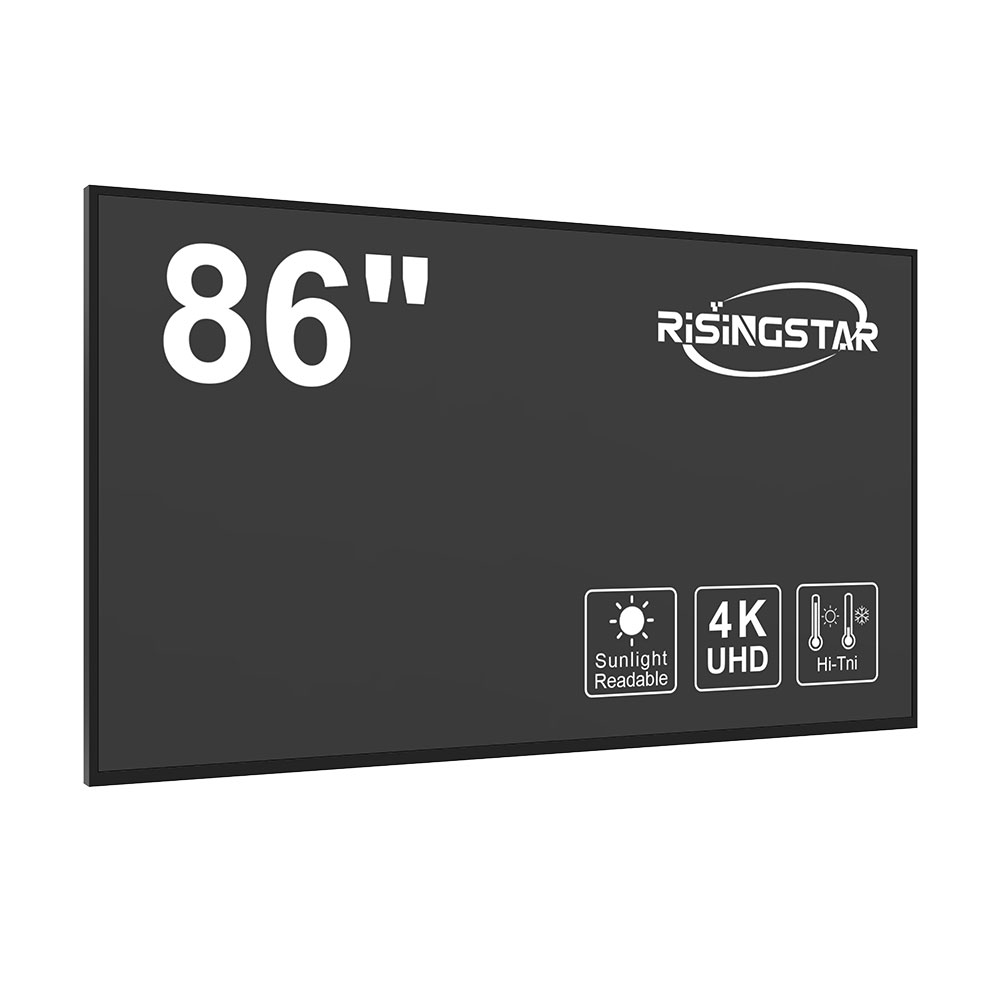- Home
- About Us
- Products
- News
- Video
- Contact
- Send Inquiry
Search
- Home
- About Us
- Products
- News
- Video
- Contact
- Send Inquiry

Outdoor high-brightness LCD strip screens have become a critical component in modern passenger information systems (PIS), especially in transportation hubs such as airports, train stations, bus terminals, and metro systems. These displays are engineered to operate reliably under harsh environmental conditions—including direct sunlight, temperature extremes, humidity, and dust—while delivering crisp, real-time updates on schedules, delays, safety alerts, and emergency instructions. The strip screen series, ranging from 14.1 inches to 86 inches, offers scalable solutions tailored to diverse infrastructure needs across global markets.
The selection of screen size is driven by application context. For example, compact 14.1”–24” units are ideal for vertical kiosks or onboard vehicle displays where space is limited but clarity is essential. Mid-range sizes like 28”–37” are commonly used in station concourses and platform zones where visibility at distance matters. Larger formats—from 42” to 86”—are deployed in open-air environments such as airport arrival halls or highway rest stops, where ambient light levels can exceed 5000 lux. Industry benchmarks, such as those defined by the International Electrotechnical Commission (IEC) and ISO 14001 standards, emphasize luminance output of at least 5,000 nits for outdoor applications—a performance level consistently achieved by premium strip screen models using LED-backlit panels and advanced anti-glare coatings.
Technically, these screens integrate industrial-grade components including wide viewing angles (up to 178°), IP65-rated enclosures for dust and water resistance, and ruggedized power supplies capable of operating between -30°C and +60°C. Many also feature built-in touch functionality for interactive PIS, supported by Android or Windows-based embedded systems. Case studies from Singapore Changi Airport and London’s Transport for London (TfL) illustrate how strip screens with dynamic content management systems (CMS) reduce passenger confusion during disruptions by providing multilingual, real-time updates across multiple display clusters. Additionally, energy-efficient designs comply with ENERGY STAR and EU Ecodesign regulations, reducing operational costs over time.
Manufacturers now offer customizable configurations including weatherproof mounting brackets, solar-powered variants, and integration with IoT platforms for remote diagnostics and firmware updates. This modularity enables cities and transit authorities to future-proof investments while ensuring compliance with evolving accessibility standards like WCAG 2.1. As urban populations grow and public transport becomes more digitized, outdoor strip screens will remain indispensable—not just for informing passengers, but for enhancing overall system resilience and user experience in smart city ecosystems.
